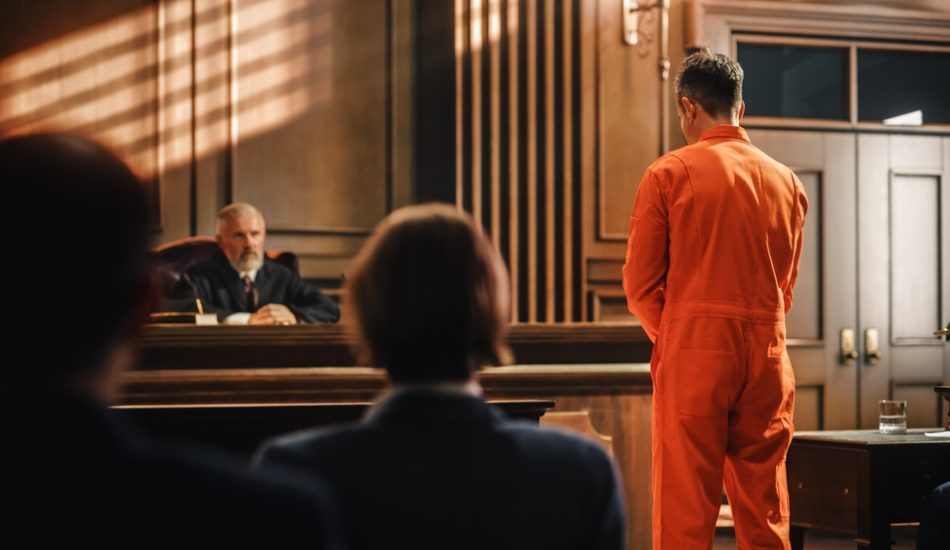4701 Oleander Drive, Suite A
Myrtle Beach, SC 29577
4701 Oleander Drive, Suite A
Myrtle Beach, SC 29577
Only the “Most Guilty” Defendants Can be Forced to Wear Shackles in Front of Their Jury
Can you be forced to wear shackles, handcuffs, or an orange jumpsuit in front of your jury at trial?
You would think the answer is a loud and consistent, “No.” How can a defendant get a fair trial when the state has dressed them in a bright orange jumpsuit, demonstrating that they are, in fact, in jail, and shackles, demonstrating that they are, in fact, dangerous, and the jurors must be protected from them?
Does a defendant who was forced to wear shackles at trial need to prove prejudice on appeal to get their conviction reversed?
The US Supreme Court and the SC Supreme Court have previously held that forcing a defendant to wear shackles at trial is inherently prejudicial. The defendant does not need to prove they were prejudiced by the shackles; therefore, there is no harmless error analysis.
But the SC Supreme Court, in State v. Heyward, has also said that, when a trial judge forces a defendant to wear shackles in front of their jury without a good reason, they will not reverse the conviction unless the defendant proves there was prejudice.
Since there was overwhelming evidence of Heyward’s guilt, his conviction is affirmed….
When Can the Court Force a Defendant to Wear Shackles During Their Jury Trial? What’s the Rule?
Ordinarily, when an appellate court finds that a trial court has made a mistake of law, they will then engage in a “harmless error” analysis.
Even though the trial court made a mistake, there is no need to reverse the conviction unless the mistake affected the outcome of the trial. If there was overwhelming evidence of the defendant’s guilt apart from the trial court’s error, the conviction is affirmed.
When Shackles are Necessary
In some cases, it may be necessary to restrain a defendant during their trial.
For example, in State v. Tucker, 320 S.C. 206, 209, 464 S.E.2d 105, 107 (1995), the SC Supreme Court approved the use of shackles during trial where 1) the trial judge articulated the reasons shackles were necessary (the defendant was being tried for capital murder and had a history of escapes and resisting arrest) and 2) the trial judge ensured that the shackles were not visible to the jury.
The SC Supreme Court in Heyward affirms that 1) the trial judge cannot force a defendant to wear shackles in front of jurors unless it is necessary and 2) if shackles are necessary, they must be concealed from the jury:
…a defendant in a criminal trial may not be required to wear handcuffs, leg shackles, or other restraints in the presence of the jury unless the trial court makes specific findings on the record as to the particular reasons the restraints are necessary. If the court finds restraints are necessary, it must make every reasonable effort to ensure the restraints are not visible to the jury.
The Court also acknowledges that the trial judge in Heyward “made no effort whatsoever to assess whether the shackles were necessary, nor to ensure the jury could not see them,” and “the trial court’s failure in this case to even consider Heyward’s request was an abuse of discretion.”
Are Shackles in Front of the Jury “Inherently Prejudicial” or “Harmless Error?”
So, was the trial court’s error “inherently prejudicial,” or does the Court engage in a harmless error analysis?
Inherently Prejudicial
According to the Court, visible shackles are inherently prejudicial, and the defendant does not need to prove actual prejudice – the due process violation is presumed:
Visible shackles on a defendant, however, are “inherently prejudicial,” and thus, when “a court, without adequate justification, orders the defendant to wear shackles that will be seen by the jury, the defendant need not demonstrate actual prejudice to make out a due process violation.
But not in this case. Why?
Harmless Error
In Heyward, despite the Court’s consistent rulings that forcing a defendant to wear shackles in front of the jury without justification is “inherently prejudicial” and does not require the defendant to prove prejudice, the Court affirmed the conviction and held that forcing him to wear shackles was “harmless error.”
Why? How is this case different?
For one thing, this case had a single eyewitness who was a child at the time of the events, who likely suffered severe trauma, and who would likely be required to testify again if the case is retried…
But that’s not a valid reason to affirm a conviction. Instead, the Court explains that the inherently prejudicial forcing of the defendant to wear shackles in front of the jury, which does not require the defendant to prove prejudice, also does not require reversal… unless the Court finds that the shackling contributed to the verdict obtained:
…the error requires reversal unless the State “prove[s] ‘beyond a reasonable doubt that the [shackling] error complained of did not contribute to the verdict obtained… We find the State did that in this case by conclusively proving Heyward’s guilt with other overwhelming evidence such that no other rational conclusion could be reached except that he is guilty of each crime.
Saying that the “error… did not contribute to the verdict” is the same thing as saying that “there was no prejudice proven,” isn’t it?
Got Axelrod?
If you have been charged with a crime in SC, if you have been convicted of a crime and need help filing your appeal, if you won an appeal and need help retrying your case, or if you need help with your criminal case, call now at 843-353-3449 or email us online to speak with a criminal defense lawyer on the Axelrod team today.
Need help? Contact Axelrod & Associates, P.A.

Request your
Consultation
The fields marked with * are mandatory.



